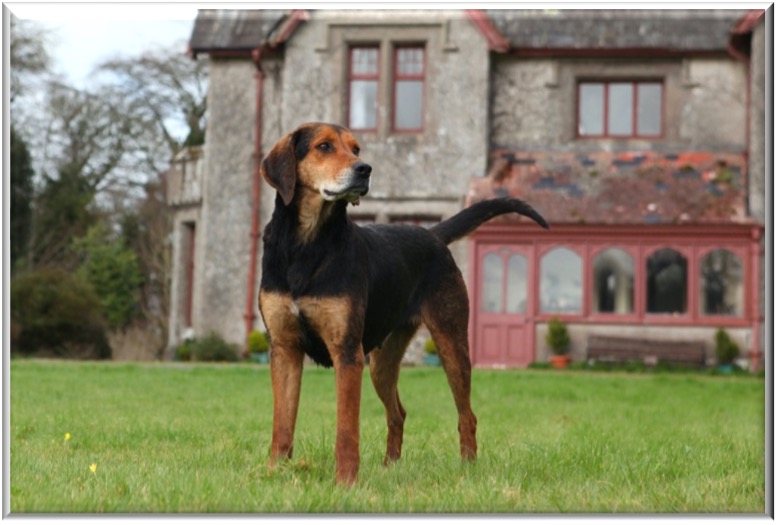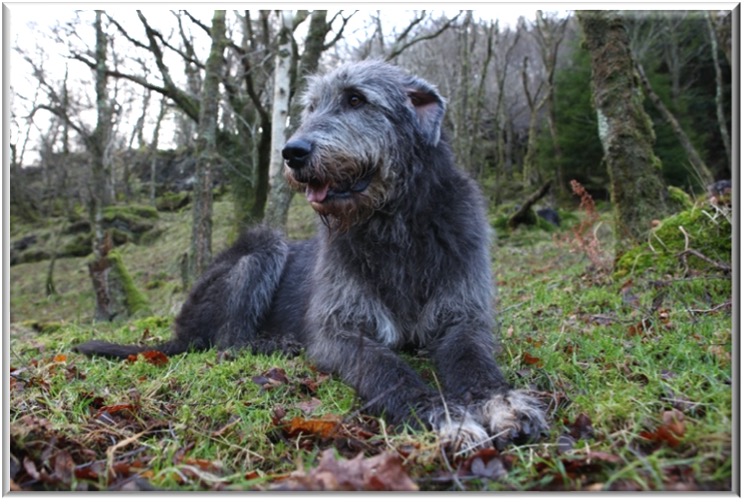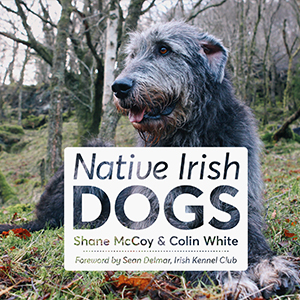This holiday season we’re taking a look at our favourite books which make fantastic gifts for friends and family and of course treats for yourself!
Every day for the first twelve days of December we’re doing a blog on each of the 12 best books in our collection, the most-loved titles by all our staff for 12 Days of Blogmas!
Here’s why you should pick them up.
Day 2: Native Irish Dogs
The real question is, why wouldn’t you get an Irish dog?
Whether or not you have a dog I’m sure that you’ve heard at least once, the saying: “a dog is man’s best friend“. The term was first used way back in 1789 by King Frederick of Prussia. He’s claimed to have said in full, that, “the only, absolute and best friend that a man has, in this selfish world, the only one that will not betray or deny him, is his Dog.”
At the same time, however, we’re all aware that caring for a dog can not only be expensive, but a special kind of stress added to our already hectic lives. However, the stress is often nothing more than an excuse we make because we do not have the necessary self-confidence or the courage to take responsibility for a pet.
As always, a useful and fascinating way to overcome the most hidden preconceptions and our greatest fears is to deepen our knowledge and become passionate about that topic. That’s why today we’re going to show you the three most beautiful breeds of Irish dogs that you will surely fall in love with!
To do this in the best possible way we need to rely on someone who knows much more about these loving creatures than we do, so this time we’re enlisting the help of Shane McCoy and Colin White, authors of the book Native Irish Dogs.
When it comes to dogs, Ireland boasts a broad and diverse range of breeds whose origins are unique. From the iconic Irish Wolfhound to the lesser-known Glen of Imaal Terrier, the native dogs of Ireland are ancient breeds with diverse histories and mythologies.
With nine Irish breeds in total – four terriers, three gun dogs and two hounds – the book delves into each breed and how it evolved and developed specific characteristics to assist them in daily life. In days long past, the dogs were not only working dogs, they also formed an integral part of Irish family life and proved to be superb companion animals. From these humble beginnings, it was in the early 20th century that these native dogs were increasingly connected with Irish Nationalism and became symbols of Ireland’s Celtic past.
This book provides a pictorial look at all of our native breeds, each one an intrinsic part of our rich heritage. These dogs are to be treasured and protected as a vital piece of our historical inheritance.
Kerry Beagle

Fast, curious and friendly, these are the first three adjectives that the authors use to describe one of my favourite dog breed, the Kerry Beagle. It’s the Irish breed that perhaps perfectly reflects the saying “dog is the man’s best friend”. The most interesting fact about this breed, is the story behind its development. Paradoxically, the ‘beagle’ should not be in its name as the nature of the Kerry Beagle is much closer to that of a hound.
While aggressive hunters on the field, Kerry Beagles tend to be affectionate and gentle in the home, making them excellent family pets. These dogs also make excellent watchdogs, but they are generally to active and vocal to be comfortable in a smaller apartment-like setting.
To give you a better idea of what this breed looks like, here’s a description from the book:
‘The Kerry Beagle is a medium-sized hound, standing approximately 61cm tall at the wither and weighing 27kg, with a broad head and long ears. This conformation suggests speed and endurance. This breed has a short, close-lying coat that comes in a variety of colours. Black and tan is the more common colour, although the coat may be tan and white, blue-mottled, tan, solid black or a tricolour of black-tan-white.’
Irish Terrier

Irish Terriers are known as the gentlest of the terrier breeds and are highly recommended for families with children. They form strong bonds with family members which means they don’t like being left at home on their own for very long.
When it comes to describing the Irish Terrier, there is no better way to do so than using the three not so common adjectives given by Shane McCoy and Colin White: bold, dashing, tender-hearted. You might be wondering what’s so special about this dog and that would be the history that precedes it.
Browsing through the pages of Native Irish Dogs you read:
‘During the World War I, the Irish Terrier showed its usefulness, when, due to their extraordinary intelligence and fearlessness, they were trained as guard dogs and messengers for soldiers. On the battlefield the dogs were referred to as ‘Micks’ or ‘Paddys’, and it was said that the Irish Terrier could work longer and harder on a bowl of biscuits than ‘any other living creature’. The Irish Terrier today endures as the fearless devil of yesteryear, and their intelligence and courage remain very much intact.’
Irish Wolfhound

Last but not least, one of the most unusual Irish breeds is the Irish Wolfhound which the authors describe as calm, dignified and courageous. Believe it or not, the first time the Wolfhound touched Irish soil was the 3rd century BC, when one was brought in by the Celts. Some of you may think that the attention to detail given to a dog ‘s history to be too much, but with such a long storied past, but the Irish Wolfhound is an important sighthound, and by its presence and substantial size, has inspired literature, poetry and mythology.
Known as a gentle giants due to their sweet temperament, Irish Wolfhounds make great family pets. They are wonderful with children and other pets if socialised from a young age.
‘Extremely easy to care for, the Wolfhound’s coat is essentially self-maintaining and a brush through every couple of weeks will suffice. Apart from a daily walk, they are easy dogs to care for. Due to their size, they will naturally eat far more than smaller breeds, and feeding one can be costly. Irish Wolfhounds would do best in a large house with a large garden or in a country setting.’
If this short review has somehow increased your interest in dogs then you should seriously consider reading every detail of Native Irish Dogs by Shane McCoy & Colin White, which is available to purchase here.


